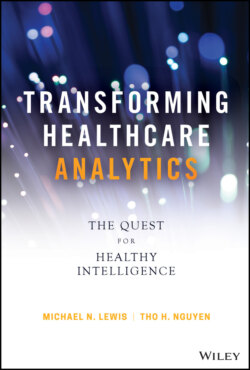Читать книгу Transforming Healthcare Analytics - Michael N. Lewis - Страница 22
MULTIFACETED AND SILOED DATA
ОглавлениеHealthcare data comes from many sources and various systems. It is multifaceted and not linear. One data point does not necessarily follow or precede another since our health or diagnosis does not follow any regimen. As data points can come from handwritten notes, electronic systems, or piles of folders, data quality may be an issue in many organizations. Healthcare data involve many variables that make it challenging to centralize and analyze. Like our human body that consists of many parts to make it work together, healthcare data is very similar. Healthcare data is a combination of individual systems or silos that are very complex and unable to work together. Collecting and managing the healthcare data from each of those systems is often done with disparate applications, which makes it impossible to share and leverage that data across an ecosystem of fragmented applications.
Healthcare data comes from various departments across the organization. Data source systems such as electronic medical records (EMR) and electronic health records (EHR) software store certain data while different departments like radiology or intensive care units also have their own silos of data. In many instances, these types of data are in different formats – text, numeric, digital, paper, pictures, videos, etc. For example, radiology uses images while old medical records exist in note or paper formats while EMR systems can store hundreds of rows of textual and numerical data. Centralizing and aggregating all of this data into a single, unified system such as an enterprise data warehouse is a logical choice to make all of this data accessible and apply analytics for actionable decisions.
